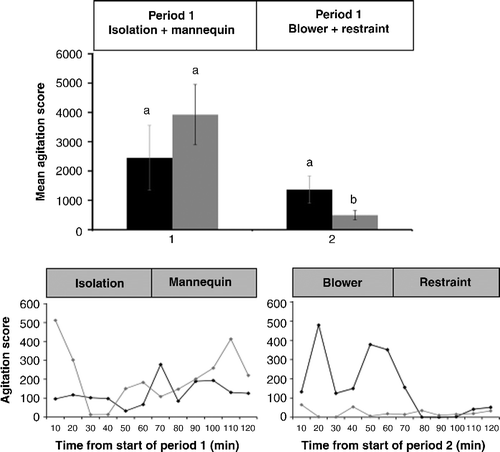Figures & data
Table I. Mean ± SEM live weight and agitation score at weaning in calm and nervous sheep that were either maintained with flock mates (control) or subjected to isolation stress or the layered stressor paradigm.
Figure 1. Schema showing the structure of the layered stressor paradigm (1a) and the set-up (1f) used to expose the animals to the selection stressors (isolation and exposure to a mannequin placed at B) and the non-selection stressors (blower placed at A and animal restrained inside isolation box). 1b and 1c show an animal confined to the isolation box and the method of blood collection from outside the isolation box. Figure 1d and 1e show the placement of the blower outside the isolation box with the back door open and the mannequin used to simulate human presence.
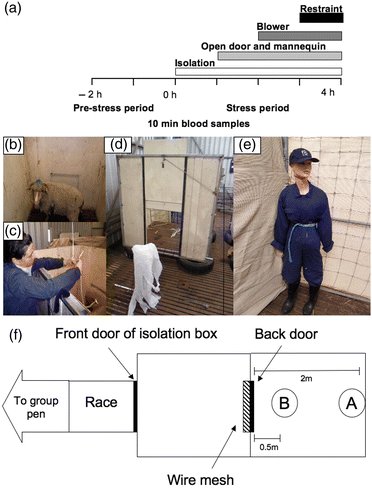
Table II. Mean ( ± SEM) parameters of cortisol secretion in calm and nervous sheep.
Figure 2. Representative profiles of the plasma concentration of cortisol in calm (left panels; black diamond) and nervous (right panels; grey square) sheep maintained with companion animals (top panels; control), subjected to isolation stress (middle panels) or the layered stressor paradigm (bottom panels). Isolation (I) is indicated by the pale grey shaded area. The onset of each of stressors in the layered stressor paradigm is indicated by the first letter of the stressor (i.e. M for mannequin, B for blower and R for restraint). Pulses of cortisol are indicated by the placement of an arrow at the peak of the pulse.
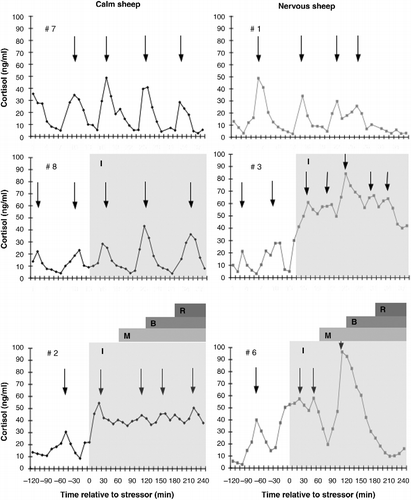
Table III. Mean ( ± SEM) parameters of LH secretion in calm and nervous sheep.
Figure 3. Representative profiles of the plasma concentration of LH secretion in calm (left panels; black diamond) and nervous (right panels; grey square) sheep maintained with companion sheep (top panels; control), subjected to isolation stress (middle panels; isolation only) or the layered stressor paradigm (bottom panels). Isolation (I) is indicated by the pale grey shaded area. The onset of each of stressors in the layered stressor paradigm is indicated by the first letter of the stressor (i.e. M for mannequin, B for blower and R for restraint). Pulses of LH are indicated by the placement of an arrow at the peak of the pulse.
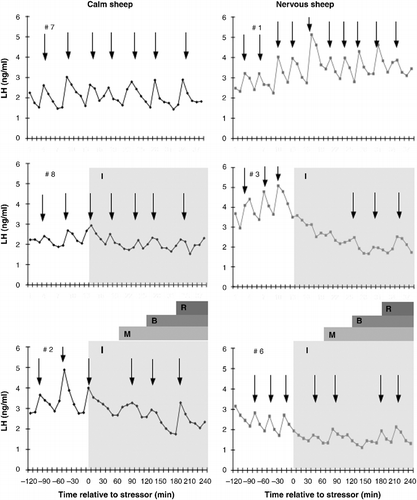
Figure 4. Mean ( ± SEM) cumulative agitation score during Periods 1 and 2 in calm sheep (black bars) and nervous sheep (grey bars) subjected to isolation stress. Superscripts indicate differences between temperaments or within temperament over time within treatment (P < 0.05). The changes in the mean agitation score over time (10 min intervals) are shown below for Period 1 (left panel) and Period 2 (right panel) for calm sheep (black diamond) and nervous sheep (grey diamond).
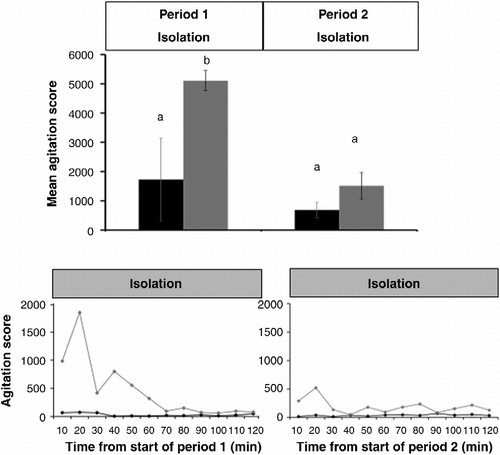
Figure 5. Mean ( ± SEM) cumulative agitation score during Periods 1 and 2 in calm sheep (black bars) and nervous sheep (grey bars) subjected to the layered stressor paradigm. The sheep were subjected to isolation combined with a mannequin during Period 1 with the addition of a novel object (blower) and restraint during Period 2. Superscripts indicate differences between temperaments or within temperament over time within treatment (P < 0.05). The changes in the mean agitation score over time (10 min intervals) are shown below for Period 1 (left panel) and Period 2 (right panel) for calm sheep (black diamond) and nervous sheep (grey diamond).
